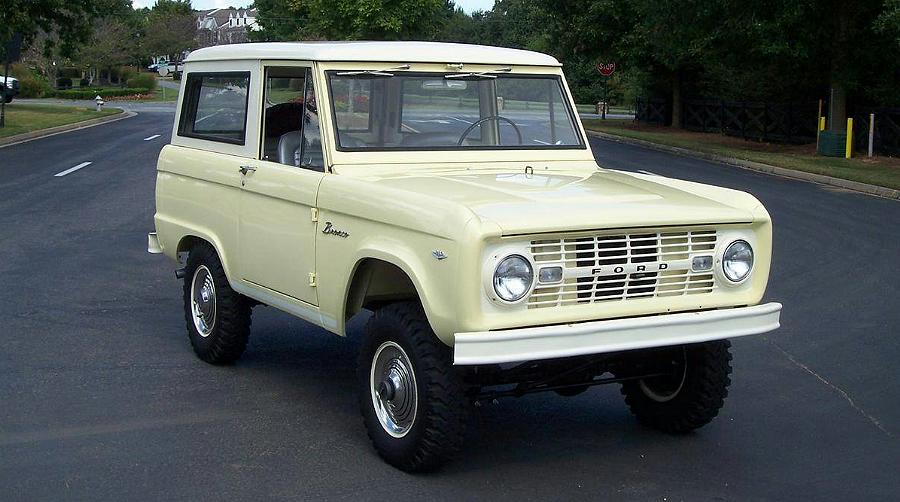
The Ford Bronco was made available from 1966-1996, and is viewed as five (5) different generations:
- 1966-1977 – Generation I (The ‘Early Bronco’)
- 1978-1979 – Generation II
- 1980-1986 – Generation III
- 1987-1991 – Generation IV
- 1992-1996 – Generation V
1966-1977 Generation I Ford Bronco:
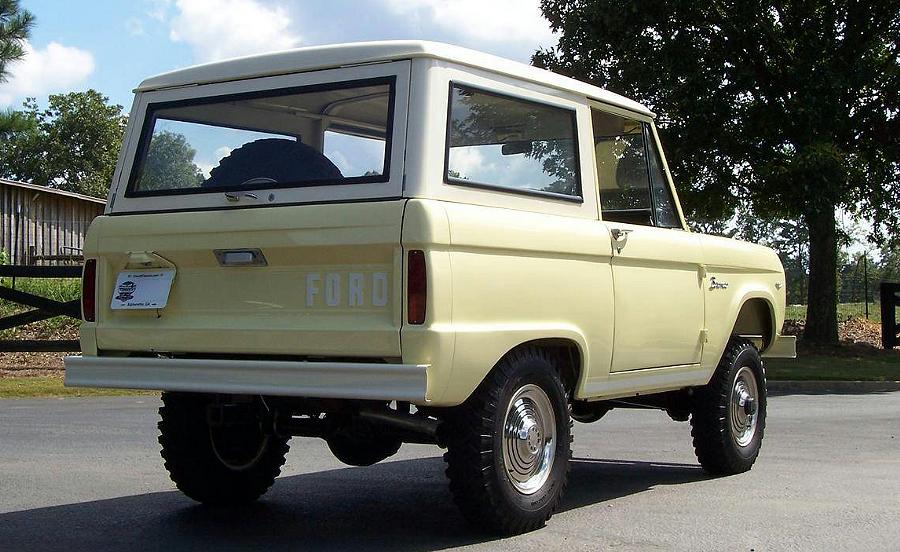
(1966 Ford Bronco Wagon – Same Bronco pictured at the top of this page)
Brought to market in August 1965 as a 1966 model to compete against the Jeep CJ-5s and International Scout 800s of the time, Ford advertised it quite simply: Bronco All-Purpose-Vehicle.
Ford’s new offering was love at first sight for those seeking a more civilized, smoother riding, more powerful, two-door alternative to the CJ-5s and International Harvesters of the day. Ford sold more than 35,000 Broncos during the first two years.
The Wagon was the most common and offered a full-length roof with upper body sides installed on the basic body. The top and upper body sides could be unbolted and removed, as desired. The Pickup (until the 1972 model) came with a short steel roof that was also removable, and weighed 70 pounds. The Roadster model (until 1968) had no roof or doors. Smooth, contoured door openings filled in a portion of the area where full steel doors were used on the other models. Optional doors and a soft-top were available as options. The models offered either bench or bucket front seats, and an optional rear seat.

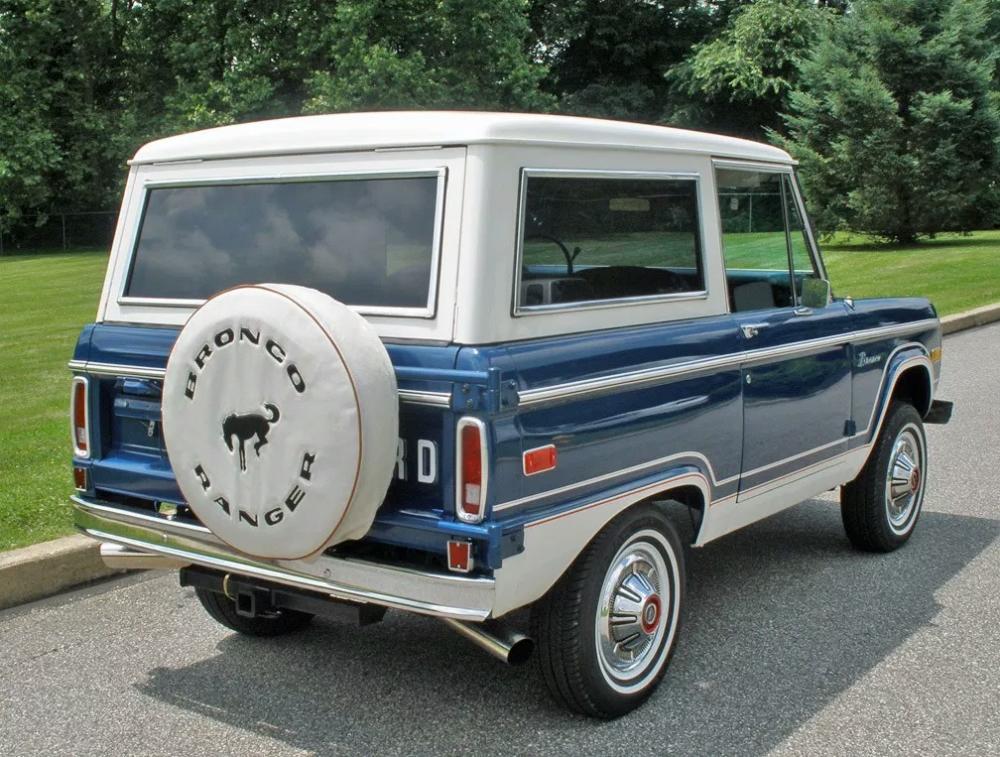
Up front, Ford offered what it called the Mono-Beam Suspension. Straight axles were used with the front axle connected to the chassis via forged steel radius arms and a lateral track bar. Ford boasted about the “wide” 57-inch track width of the first-generation Bronco. Coil springs were used up front, while conventional leaf springs were used in the rear. Standard and heavy-duty suspension systems were offered from the factory.
A number of carbureted engines were offered in the first-generation Broncos. These included the 170ci I-6, 200ci I-6, 289ci Windsor V-8, and 302ci Windsor V-8 (exclusive for 1975-1977 trucks). The three-speed Ford 303 manual transmission was a column-shifted gear changer and the C4 three-speed automatic was offered behind the 302ci V-8 starting in 1973. The iron-case, gear-drive transfer case was a Dana 20 in either T-shift pattern (2.46:1 low range) for 1966-1972, or J-shift pattern (2.34:1 low range) for 1973-1977. A PTO output at the transfer case was also available during the early years of the Bronco.
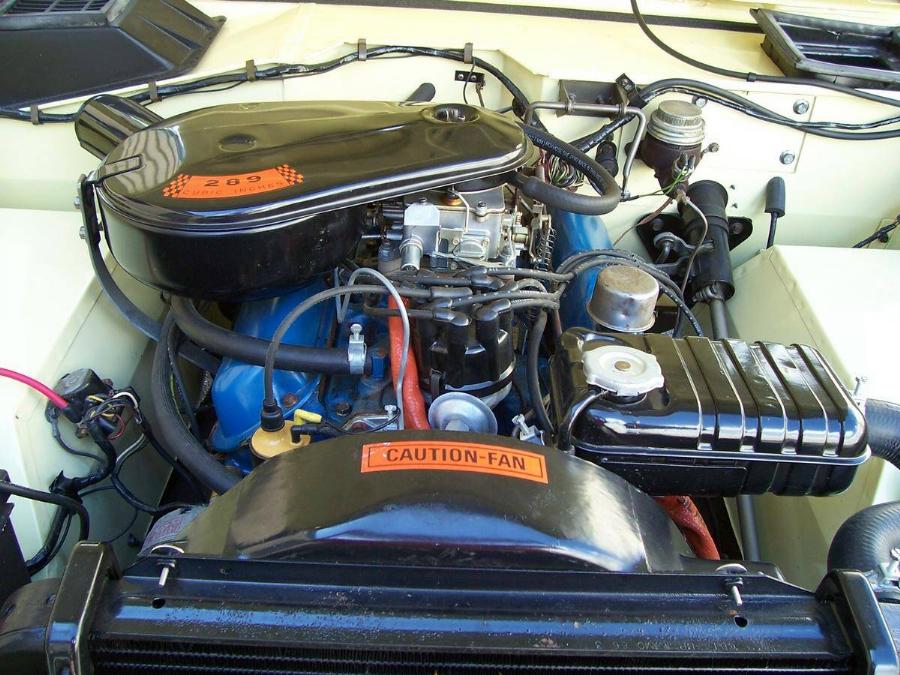
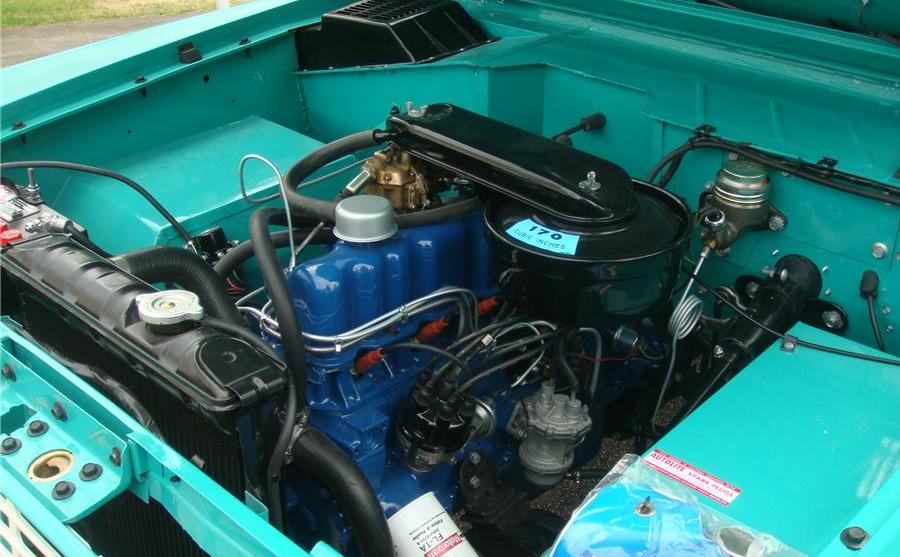
This generation Bronco used a Ford 9-inch axle in the rear. The front axle was a Dana 30 from 1966-1970. A Dana 44 front axle replaced it in 1971. Front drum brakes were used until 1976. Disc brakes became an option in 1976, and were standard starting in 1977.
Options on the early models included items such as snowplows, front overload air springs, and winches.
It was the off-road racing scene that really put the spotlight on the early Bronco. The Ford-backed Holman-Moody-Stroppe (HMR) racing team started winning races with the Bronco’s in 1965, even before some dealers had them on the lot.
The publicity gained from winning the Mint 400, Baja 500, and Mexican 1000 / Baja1000 with legendary drivers like Larry Minor, Rod Hall, Parnelli Jones and Bill Stroppe leading the charge, cemented the Bronco name in automotive history books.
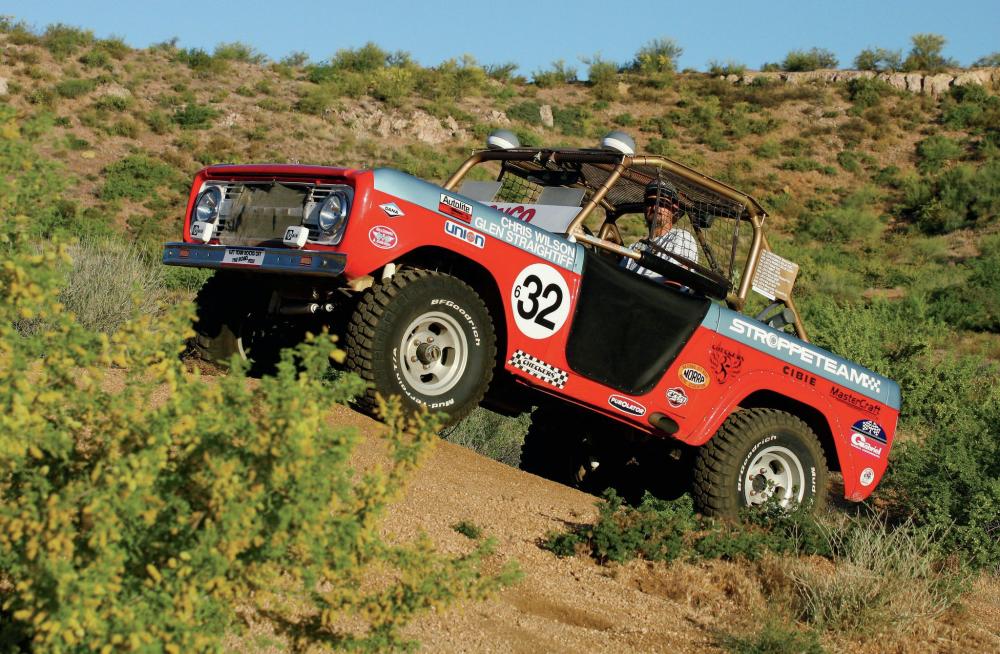
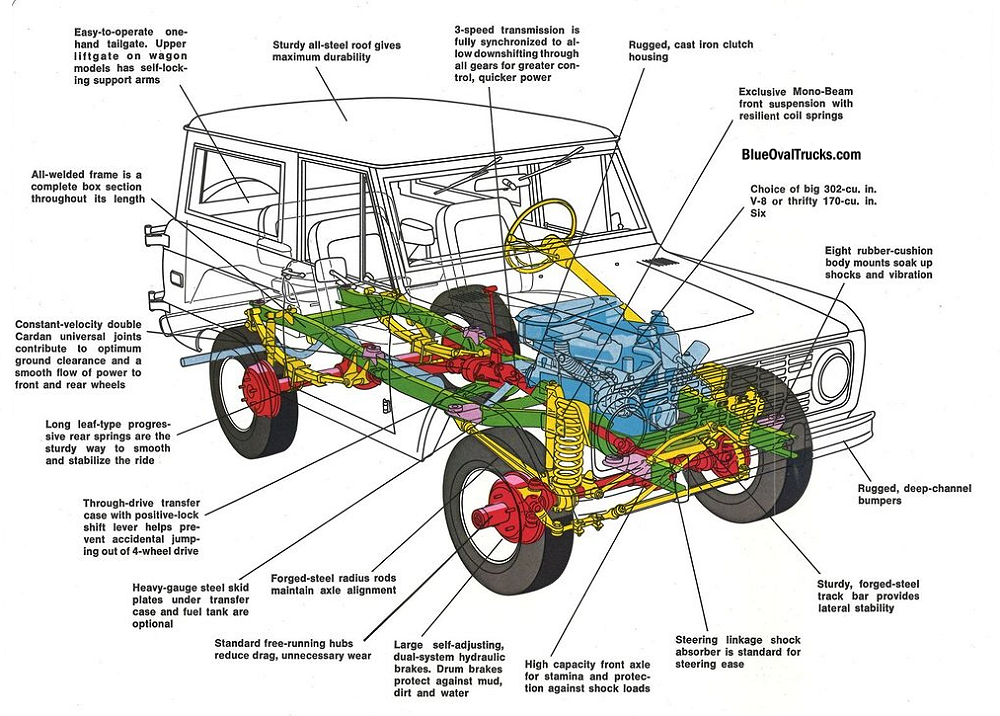
1966-1977 Ford Bronco Specifications:
Models:
- Wagon
- Half-cab
- Roadster
- Sport Bronco Wagon
- Bronco Ranger
Dimensions:
- Wheelbase: 92-inches
- Overall Length: 151.5-inches
- Width: 68.5-inches
- Height: 71.6-inches
Powertrain:
- 170 cu in (2.8 L) Straight-6
- 200 cu in (3.3 L) Straight-6
- 289 cu in (4.7 L) Windsor V8
- 302 cu in (4.9 L) Windsor V8
- 3-speed manual transmission
- 3-speed automatic transmission
- Dana 20 transfer case
Axles:
- Ford 9-inch rear
- Dana 30 front (1966-1970)
- Dana 44 front (1971-1977)
Brakes:
- Rear drum
- Front drum (1966-1976)
- Front disc (1976-1977)
1978-1989 Generation II Ford Bronco:
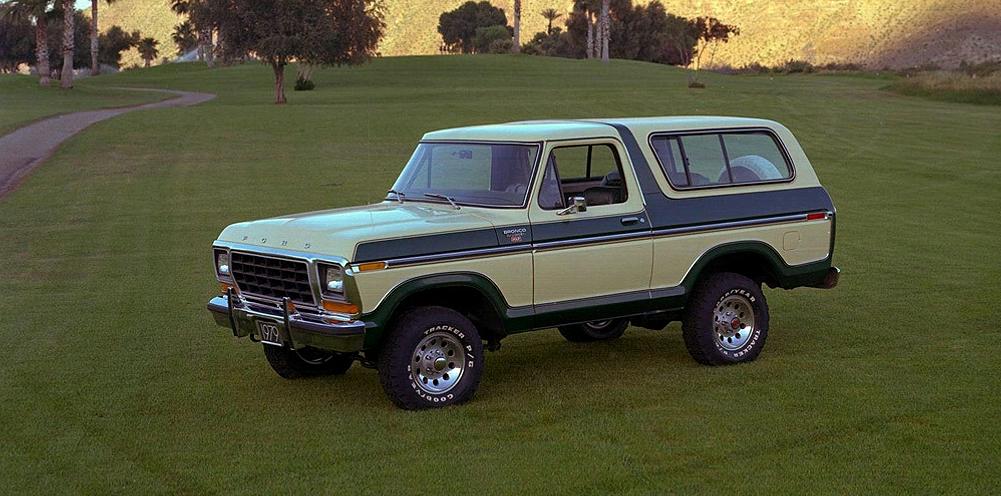
In 1978-1979 a new 106-inch-wheelbase Bronco emerged, sitting on a shortened F-100 chassis and sharing its drivetrain. Along with the foot-longer wheelbase over the previous generation, the body length grew about 28-inches and the width about 10-inches. The fullsize Bronco was born.
The Bronco had a removable top and forward folding rear bench seat, similar to the competing Blazer. For 1978, Broncos were equipped with round headlights, with the exception of the Ranger XLT trim model. For 1979, all Broncos came standard with square sealed beam headlights.
The 1978 and 1979 Broncos also merged the rear glass hatch and tailgate into a single unit that allowed the rear glass panel to retract completely into the tailgate by use of an electric motor.
Engine choice for the second-generation Bronco was limited to the 351M or 400M V-8, both with two-barrel carburetors. Transmission choices included the BorgWarner T-18 four-speed manual (6.32:1 First gear), New Process NP435 four-speed manual (6.69:1 First gear), or the C6 three-speed automatic.
Transfer case choice was either the full-time 4WD NP203 iron-case chain-drive transfer case (1.96:1 low range) or the part-time 4WD NP205 iron-case gear-driven transfer case (1.96:1 low range).
The front axle remained a Dana 44 straight axle and the rear remained the Ford 9-inch. Axle gearing was 3.50:1 or 3.55:1. Power disc-drum brakes were standard on these models and power steering became standard beginning in 1979.
1977-1979 Ford Bronco Specifications:
Models:
- Custom
- XLT
- Lariat
- Ranger
Dimensions:
- Wheelbase: 104-inches
- Length: 180.3-inches
- Width: 79.3-inches
- Height: 75.5-inches
- Curb weight: 4,663–4,718 lb
Powertrain:
- 351 cu in (5.8 L) 351M V8
- 400 cu in (6.6 L) 400 V8
- Transmission 4-speed Borg-Warner T-18 manual
- 4-speed New Process NP435 manual
- 3-speed C6 automatic
- NP203 transfer case (full time)
- NP205 transfer case (part time)
Axles:
- Ford 9-inch rear
- Dana 44 front
1980-1986 Generation III Ford Bronco:
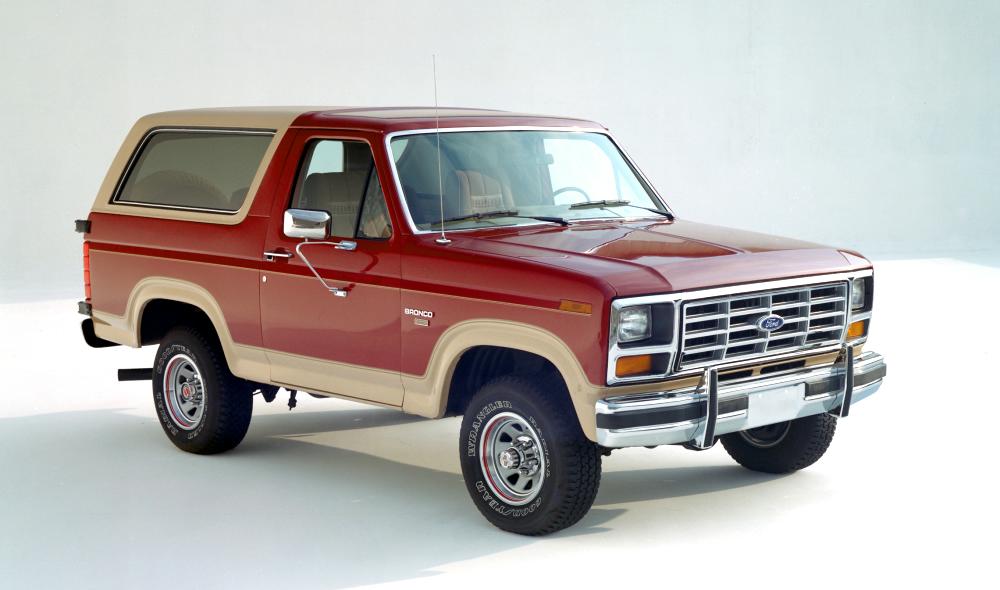
The Bronco received a redesign in 1980 to coincide with the F-series trucks. This redesigned 1980-1986 Bronco grew the wheelbase just under an inch over the previous models, but the body was shortened a few inches and narrowed about an inch.
Ford made a drastic change to the front axle and suspension system with the use of the Dana 44 Twin-Traction Beam (TTB), a style of independent front suspension. Coil springs remained as the spring of choice up front and leaf packs remained in the rear.
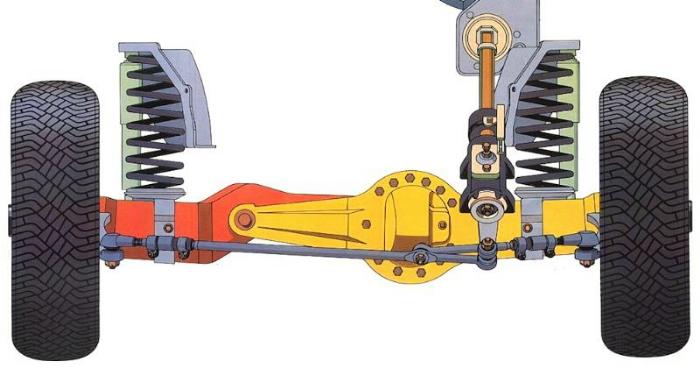
The Ford 9-inch was eventually replaced by the Ford 8.8-inch axle in 1983, and axle ratios ran from 3.00:1 to 4.11:1. The Dana 44 TTB front axle offered new automatic locking hubs.
Ford offered a reliable 300ci I-6 along with several larger engine options. There were the 302ci V-8, 351M V-8, and the more powerful 351ci Windsor V-8 scattered amongst the third generation years. Also, multi-point fuel injection was introduced on the 302ci V-8 in the 1985 models and on the remaining engines a few years later.
Transmissions included the T-18, the Tremec RTS overdrive four-speed (starting in 1981 models), the C6, and the Ford AOD four-speed automatic overdrive (starting in 1985). The transfer case was changed to the NP208 aluminum-case, chain-drive (2.61:1 low range) unit.
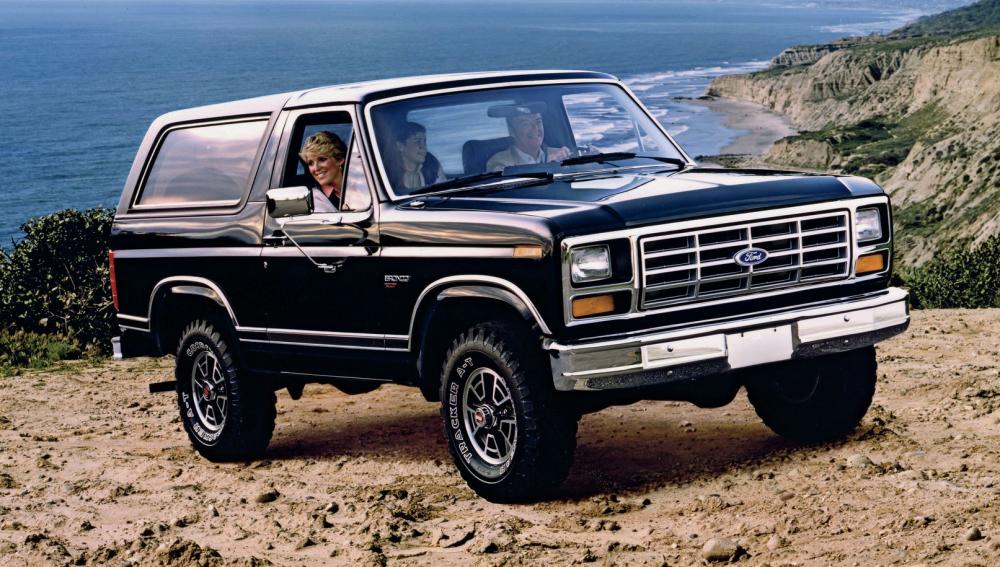
1980-1986 Ford Bronco Specifications:
Models:
- Custom
- XL
- XLT
- Lariat
- Ranger
- Eddie Bauer
Dimensions:
- Wheelbase: 104-inches
- Length: 180.4-inches
- Width: 79.3-inches
- Height: 75.5-inches
Powertrain:
- 300 cu in (4.9 L) Straight-6
- 302 cu in (4.9 L) 302 V8
- 351 cu in (5.8 L) 351M V8
- 351 cu in (5.8 L) Windsor V8
- 4-speed Borg-Warner T-18 manual transmission
- 4-speed New Process NP435 manual transmission
- 4-speed Tremec RTS OverDrive transmission
- 3-speed C6 automatic transmission
- 4-speed AOD transmission
- NP208 transfer case
- BW1345 transfer case
Axles:
- Ford 9-inch rear (1980-1982)
- Ford 8.8-inch rear (1983-1986)
- Dana 44 TTB front
1984 Ford Bronco II
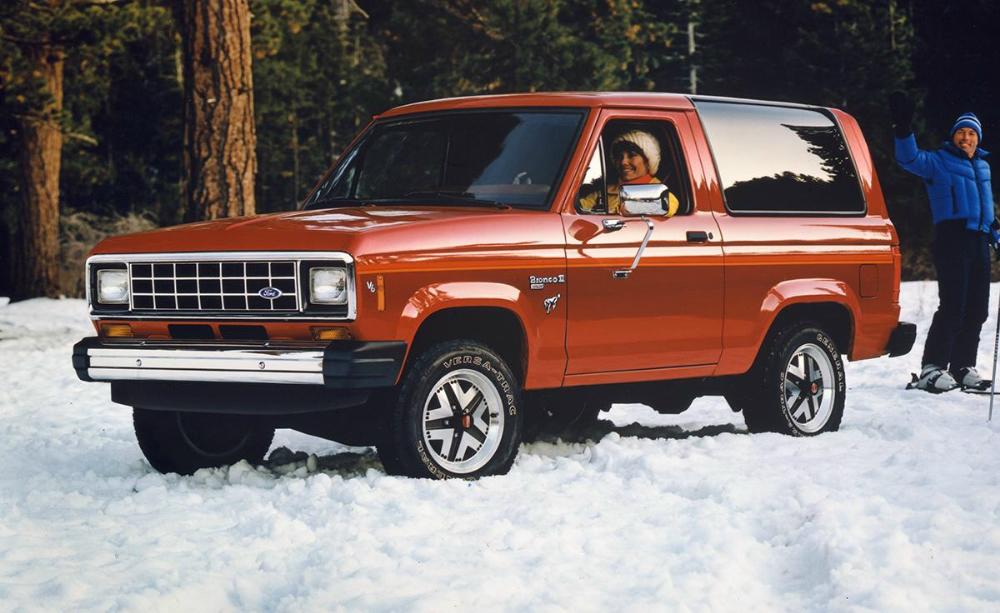
The Ford Bronco II is often left out of the Ford Bronco history. The Ford Bronco II was in production from 1984-1990. Click HERE for Ford Bronco II History.
1987-1991 Generation IV Ford Bronco
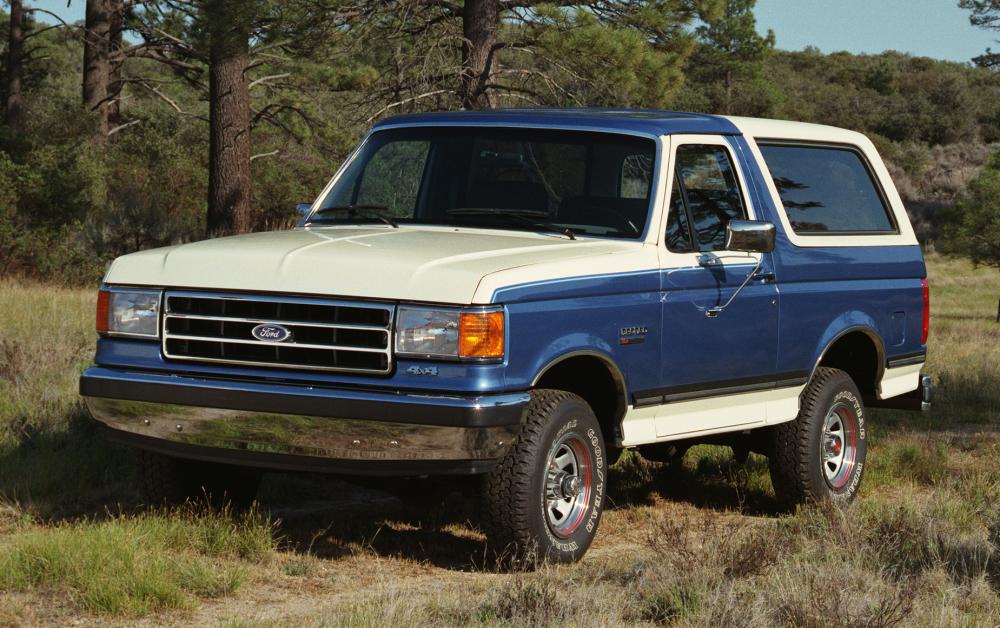
In 1987 the Ford Bronco changed again to follow inline with the Ford F-series trucks. The Bronco received the newer aero body style, and by 1988, all Bronco’s were being sold with electronic fuel injection. The engine lineup remained the 300 straight 6, 302 V8, and 351W V8. The C6 automatic was offered up through 1989 with the 351W, but was replaced with the E4OD 4-speed automatic for 1990. The 302 was still available with the AOD automatic, and a M5OD-R2 5-speed manual was also available.
The transfer case in this generation was the magnesium-case, chain-drive BorgWarner 1356 (2.69:1 low range) and axle ratios were typically 3.55:1 or 4.10:1.
1987-1991 Ford Bronco Specifications:
Models:
- Custom
- XL
- XLT
- Nite
- Eddie Bauer
Dimensions:
- Wheelbase: 104.7-inches
- Length: 80.5-inches
- Width: 79.1-inches
- Height: 74-inches
Powertrain:
- 300 cu in (4.9 L) Straight-6
- 302 cu in (4.9 L) 302 V8
- 351 cu in (5.8 L) Windsor V8
- 5-speed M5OD-R2 manual transmission
- 3-speed C6 automatic transmission
- 4-speed AOD automatic transmission
- 4-speed E4OD automatic transmission
Axles:
- Ford 8.8-inch rear
- Dana 44 TTB front
1992-1996 Generation V Ford Bronco
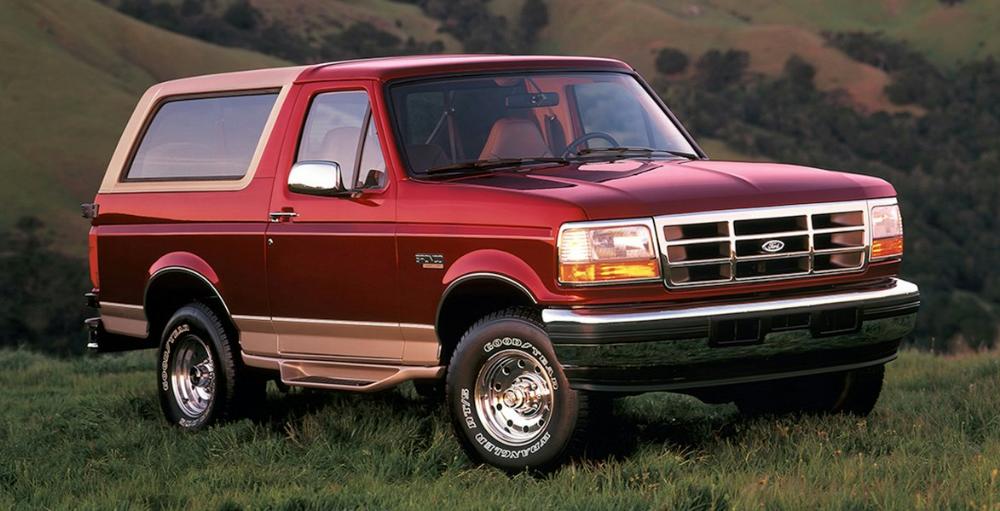
For the 1992 model, the Bronco was updated, along with the F-series pickups. Information on how to remove the top was no longer listed in the owners manual, but the top could still be unbolted and removed. They installed Torx security bolts to secure the top to the body and discouraged owners from removing them.
The 300 I-6 was discontinued after the 1993 production ended. The 302ci V-8 was swapped to a Mass Air Flow (MAF) fuel-injection system for the 1994 model and the 351ci V-8 did the same a year later. OBD-II engine control and monitoring was introduced in 1996. Four-wheel anti-lock brakes became standard in 1993.
Safety features were added in the form of front crumple zones, rear shoulder safety belts, a 3rd brake light in the top, and a driver side air bag. With the rear shoulder belt and 3rd brake light being incorporated in to the removable top, it was no longer legally removable.
For 1990 through 1992, the Nite option package featured a completely blacked-out exterior with contrasting graphics.
The engine and transmission options continued, but the AOD automatic was replaced with an AOD-E automatic.
1996 was the last year for the Ford Bronco. 1997 would see the introduction of the 4-door Ford Expedition as its replacement.
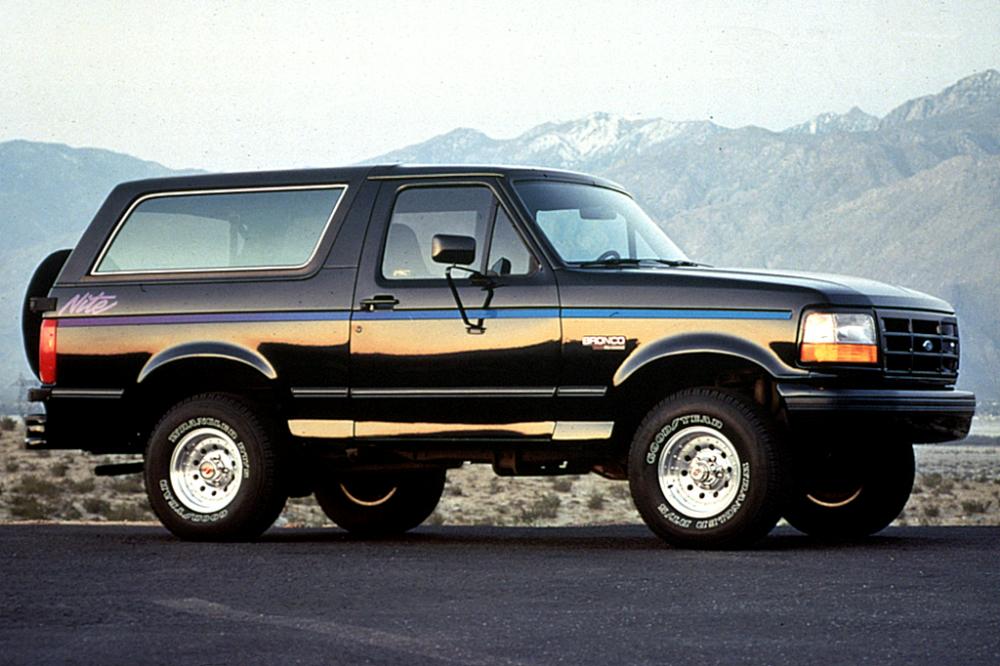
1992-1996 Ford Bronco Specifications:
Models:
- Custom
- XL
- XLT
- Nite
- Eddie Bauer
Dimensions:
- Wheelbase: 104.7-inches
- Length: 180.5-inches
- Width: 79.1-inches
- Height: 74-inches
Powertrain:
- 300 cu in (4.9 L) Straight-6
- 302 cu in (4.9 L) 302 V8
- 351 cu in (5.8 L) Windsor V8
- 5-speed M5OD-R2 manual transmission
- 3-speed C6 automatic transmission
- 4-speed AOD automatic transmission
- 4-speed E4OD automatic transmission
Axles:
- Ford 8.8-inch rear
- Dana 44 TTB front
